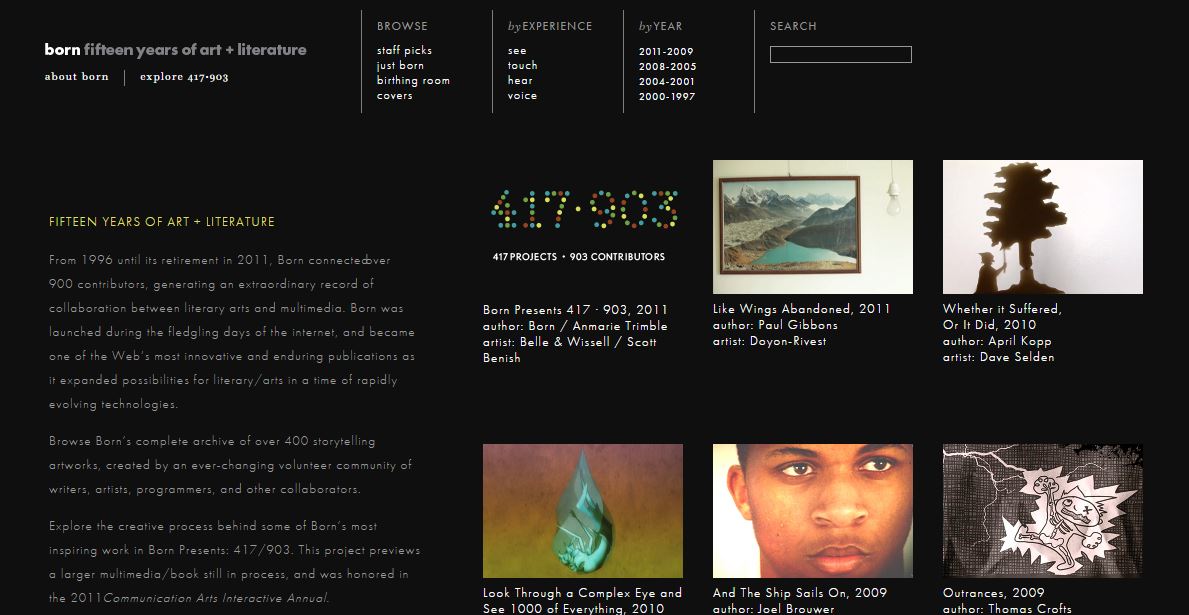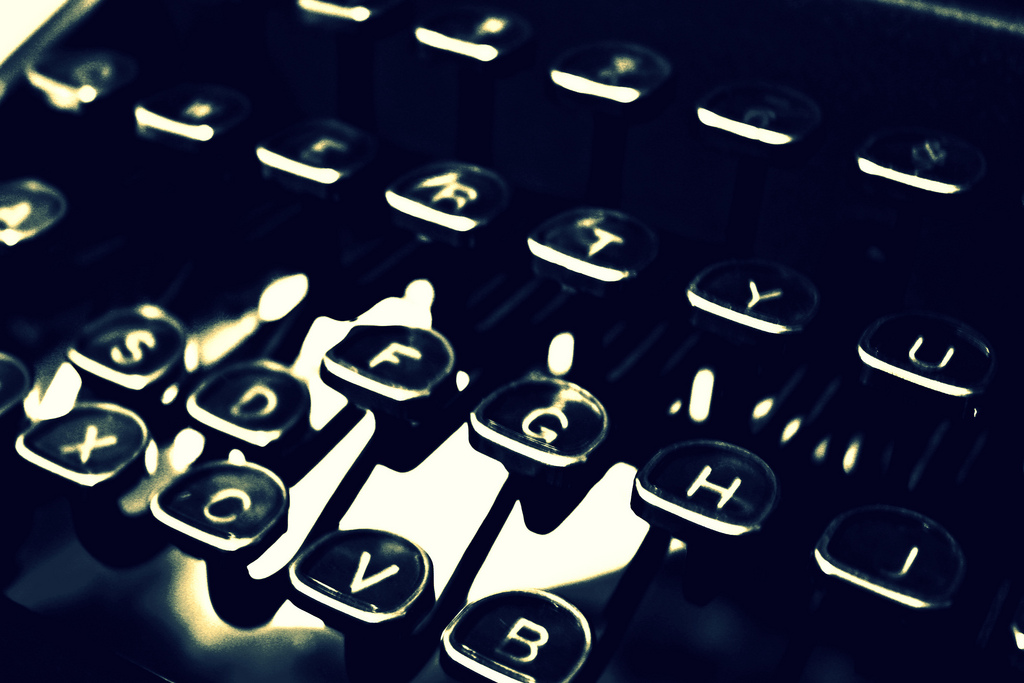Title: Born
Type: Digital magazine
Publication Launch: 1996
Publication Retirement: 2011
Link: http://archive.bornmagazine.org/

I was introduced to this magazine this fall by fellow DRC fellow Heather Lang. Here’s what she loves about the archive:
“It houses a ton of different projects, many of the newer ones being digital and very interactive. It also asks you to sort through the archive based on the kind of “experience” you want, visual, voice, and so on, which I think is a really interesting way to navigate a digital space.”
Given our current blog carnival and recent Twitter Chat (#DRCchat) about multimodality and multilinguality, Born seemed like the perfect Webtext to feature this month. For the duration of its publication run, the magazine wanted to celebrate and call attention to collaborations among media and language. According to the magazine’s about page description, most projects take the form of “media-rich interpretations of short literary works, including poetry, short fiction, and creative nonfiction.” On Born, art and technology mingle, modes blur, words and images interact.
Now the magazine seems like a glimpse into the history of literary production and digital publication during the early years of the Internet, from 1996 to 2011. It’s a testimony to the creative potential unleashed when artists–903 contributors, to be precise–engage the affordances of digital media and technology in collaborative endeavors.
We invite you to explore Born’s 417 artworks. The archive is carefully organized and well-structured. You can browse by experience, year, and site-specific labels: staff picks, just born, birthing room, and covers.
In your perusal of the site, you’ll encounter a portfolio of thumbnail images labeled with the project’s title, author, and artist. By clicking on an image, you can learn more about the project before launching into it. Here, you’ll see additional images, sometimes a short introduction to the project, the project’s tags, and a link to launch the project.
Before you head over to Born, I’d just like to give you a sneak peak of one of my favorite pieces. Choosing one to feature in this post was terrifically challenging, I should add. I found myself moving through the archive and thinking, “I like this one, and this one, and this one. . .”
In the end, I decided to introduce “The Blank Missives” here.

Author: Esther Lee
Artist: Chris Erickson
Publication Year: 2007
I found the visual texture, audience interaction, missing information, and epistolary form worked together to create an immersive, haunting quality. Reading line by line after listening to the typewriter punching out letters in a rapid staccato gave me just enough time to pause and reflect on changing communication technologies and how those changes influence how we interact with others, the messages we are capable of creating, sending, receiving, interrupting, and holding on to.
Though Born retired in 2011, there are a number of literary journals and publishers that specialize in multimedia, multimodal, and collaborative art and literature. If you like Born, check out these amazing publications and publishers:
- Mad Hatter’s Review: “We love writers who stretch their imaginations to the limits and challenge pedestrian notions of reality and style; we care little for categories, favoring fusions, alien creatures, and borderline personalities. We also love collaborative ventures, between/among writers, writers and artists, and among writers, visual artists, and composers.” (excerpt from the journal’s website)
- FC2: “fiction collective two is an author-run, not-for-profit publisher of artistically adventurous, non-traditional fiction.” (excerpt from the organization’s website)
- LUX: “LUX is a multimedia literary journal, run entirely by Sarah Lawrence grad students. It came into fruition last year. It was born as an experimentation on what a literary journal could be. A coming together of both old print media and new and expanding technology.” (excerpt from the journal’s website)
